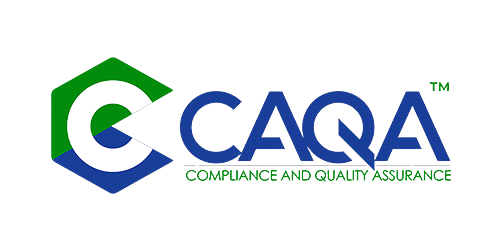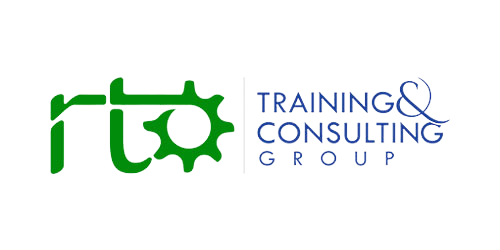The Albanese Government’s Education Legislation Amendment (Integrity and Other Measures) Bill 2025 is the most consequential cross-sector education reform since the pandemic. Unlike one-off, sector-specific fixes, this is a single legislative instrument designed to pull three levers at once: harden integrity in international education, widen equitable access to the medical profession for Indigenous Australians, and underpin an evidence-first funding architecture in early childhood education and care. The Government’s intent is unambiguous in the Minister’s second-reading speech and accompanying media release: Australia’s education reputation must be protected and upgraded, access must be expanded where the evidence shows structural under-representation, and policy should be steered by better data rather than anecdotes or short political cycles. In short, the Bill is a coordinated attempt to align integrity, equity and evidence across parts of the system that are economically significant, socially sensitive, and administratively complex.
At the heart of the package is the Government’s insistence that integrity in international education is not a technocratic nice-to-have but a precondition for the sector’s licence to operate at scale. This stance has both an economic and a reputational logic. International education is consistently described by ministers as a $51 billion export engine and a diplomatic asset that forges long-term connections well beyond tuition revenues. Yet the same scale that drives prosperity also creates incentives for poor behaviour, from agent-driven course-hopping to low-commitment entrants who treat CRICOS registration as an option rather than an obligation. The Bill therefore doubles down on “fit and proper” tests, tightens controls on onshore commissions, requires two years of proven domestic delivery before a newcomer can teach overseas students, creates an automatic cancellation mechanism for providers that effectively exit the market while remaining on the books, empowers the Government to limit or suspend particular course offerings in the national interest or where systemic quality concerns arise, and requires TEQSA authorisation for offshore degree delivery so that a student earning an Australian credential abroad can trust its integrity as if earned at home. Each measure answers a specific failure mode observed in recent years; together, they represent a damping function on volatility and opportunism without closing the door to genuine innovation or growth.
Two features of the integrity agenda deserve particular attention from providers. First, the domestic-first runway for new CRICOS entrants is a cultural reset. Requiring two years of delivery to Australian students before teaching international cohorts is not merely a compliance hurdle; it is a test of institutional seriousness. It pushes would-be providers to build student support systems, academic governance, assessment integrity processes and basic operational cadence under the scrutiny of Australian quality regulators before recruiting overseas. Universities may already meet that bar; many private providers will need to plan their market entry and cash-flow assumptions differently. Second, the ban on agent commissions for onshore student transfers is expressly aimed at curbing a pernicious churn model: the short-cycle migration of students between providers orchestrated for commission revenue, not educational benefit. Providers that have relied on such flows will need to replace them with genuine student value propositions and partnerships that meet the Bill’s new integrity expectations. These are not marginal tweaks; they change incentives at the system’s edges where the most problematic behaviours flourish.
The TEQSA authorisation requirement for offshore degree delivery is another structural move with long-run implications. Australian providers have historically benefited from the halo of national brand quality in transnational education markets. That halo has value only while it is policed. By forcing a formal authorisation step for offshore offerings, the Bill anchors the brand to a defined standard of oversight rather than mere affiliation. Providers contemplating new overseas partnerships will need to demonstrate equivalence in curriculum delivery, assessment, staff credentials, learning resources, student support and academic integrity measures, not just produce memoranda of understanding. The Government has signalled that the new TEQSA settings are “light-touch” and will leverage information providers already hold, but even a streamlined process injects real accountability into offshore ventures where quality failures can be hard to detect at a distance.
The Bill’s equity pillar is just as deliberate. Indigenous Australians are 3.8% of the population yet remain under one per cent of practising doctors, a representation gap that carries real consequences for patient trust, cultural safety and health outcomes. The legislation uncaps Commonwealth Supported Places in medicine for all Indigenous students who meet entry criteria, turning a quota-based scarcity model into a demand-driven entitlement in one of the most prestigious and capacity-constrained professions. The Government points to recent gains in Indigenous participation when demand-driven settings were applied across other degrees—5% growth in 2023 and 3% in 2024—as evidence that removing the cap matters; in medicine, where signal and scarcity effects are strongest, uncapping is a sharper instrument. The policy bet is that removing the artificial ceiling will realign expectations in schools, encourage universities to expand targeted academic support and clinical placement pathways, and grow a cohort of Indigenous physicians whose presence itself compounds future participation. The long-term health system dividends—better continuity of care, improved engagement in remote and regional communities, and the normalisation of Indigenous excellence in high-status professions—are the intended return on investment.
The early childhood component of the Bill is lighter on headlines but arguably foundational for fiscal sustainability and fairness. The Commonwealth spends more than $16 billion annually on the Child Care Subsidy; yet for a system of that scale, cost-side data are patchy, lagged, and contested. The Bill shores up the evidence base by backing the Early Education Service Delivery Prices Project with legislative authority and budget—$10.4 million over two years—to gather more accurate, comprehensive, and representative cost data. The Government’s argument is simple: you cannot build a universal, safe, affordable and accessible system if you cannot see what the true delivery cost drivers are across geographies, service types and workforce models. Better data allows for smarter indexation settings, targeted relief where provision is thin or wages are the binding constraint, and faster detection of outliers on both the pricing and quality axes. In an area where ideology has often outpaced analysis, the move is a signal that early childhood policy is finally going to run on the same evidentiary rails expected of schools and higher education.
For universities, TAFE institutes, and independent providers, the practical implications of the Bill extend beyond the obvious. On the integrity front, institutions must translate legislative intent into operational discipline: agent management frameworks that enforce the commission ban on onshore transfers; strengthened due-diligence for new partnerships; governance processes that review the risk of program areas flagged for potential limitation or suspension in the national interest; and, for universities with offshore ambitions, TEQSA-ready dossiers that demonstrate equivalence in design and delivery. These demands will land unevenly: large, research-intensive universities already carry substantial compliance infrastructure; smaller private providers that grew quickly in the last decade may need to formalise practices previously managed through relationships and reputation. The risk is not merely regulatory: in a global market that responds quickly to perceived instability, the first providers caught out by the new rules will set the narrative for the rest.
In medical education, the uncapping of Indigenous CSPs is both a moral commitment and a planning problem. Medical schools operate with finely balanced clinical placement ecologies, simulation capacity, and supervision ratios. Uncapping creates a rights-based inflow—everyone who meets entry criteria must be offered a funded place, which shifts the burden onto universities and state health systems to ensure clinical rotations scale without eroding quality. The likely policy response, signalled in ministerial remarks, is that demand-driven funding for Indigenous students will sit alongside targeted investments in clinical training capacity, Indigenous student support, bridging and preparatory programs, and partnerships with Aboriginal Community Controlled Health Organisations. The governance challenge is to grow places in ways that maintain high standards while honouring the principle that scarcity should no longer be the gatekeeper for Indigenous participation in medicine.
In early childhood, the legislation’s data mandate will ripple quickly through provider behaviour. When governments commit to collect and use fine-grained cost data to shape subsidies and program rules, providers have an incentive to improve their internal accounting and workforce analytics, not simply to satisfy compliance but to make a better case for the true cost of quality, including wages, professional development, inclusion support, and rural service premiums. Over time, a more sophisticated cost model can also help depoliticise debates about fee movements by revealing where increases are linked to wage improvements—especially if governments decide that lifting educator pay to support retention and quality is an explicit objective. In that sense, the data piece is not bureaucratic housekeeping; it is a precondition for honest conversations about what it takes to make “safe, affordable and accessible” real in every postcode.
Critics of the Bill will argue on three fronts. First, some will claim that the international education provisions risk over-correcting, dampening growth at a time when universities and quality private providers are rebuilding pipelines. There is always a trade-off between speed and assurance; however, the Government’s response is that the measures target behaviours that corrode trust and that light-touch, transitional settings will avoid duplicating burdens by using information providers already hold. The core assumption is that genuine providers already operate at or near the new bar and that the marginal cost falls mainly on opportunistic entrants and exploitative channels. Second, sceptics will worry that uncapping medical places for Indigenous students risks setting students up to fail if academic and clinical supports cannot keep pace. But the Minister’s speech links uncapping to recent demand-driven gains and frames it as a justice issue that reshapes expectations upstream in schooling and in university admissions, not as a standalone gesture. Third, some will see the early childhood data project as technocratic busywork. Yet with billions at stake each year, determining what we pay for and why is a fairness issue as well as a fiscal one; families and educators both benefit when the subsidy architecture reflects real costs and real quality drivers.
Implementation will decide whether the Bill’s promise becomes practice. On integrity, the Department and regulators will need to publish clear guidance quickly: what counts as a commission in the context of onshore transfers; how evidence for two-year domestic delivery will be assessed; the threshold for invoking national interest course limitations; and the precise documentation and equivalence tests for TEQSA’s offshore authorisation. On equity, medical schools should publicly set out their expanded support ecosystems—academic preparation, mentoring, cultural safety in clinical placements, and employment pipelines—so that uncapped places translate into completion and practice, not just admission. On evidence, early childhood agencies must stand up transparent, privacy-safe data collection with clear reporting cycles that feed directly into indexation and reform decisions; providers, in turn, should prepare to supply consistent cost and workforce data and to use the resulting insights to improve local service design. The rhetoric of outcomes-based policy only carries weight if agencies and institutions are disciplined about the feedback loops that follow.
For education leaders, there are strategic choices to make now rather than later. Universities and large providers should audit their international portfolios against the Bill’s tests and the likely guidance: map agent relationships to exposure under the onshore transfer commission ban; identify any offshore offerings that will require TEQSA authorisation and assemble equivalence evidence ahead of the queue; review corporate structures for cross-ownership risks relevant to the strengthened fit and proper tests; and scenario-plan for the possibility that course limitations could arrive in specific fields where national interest or systemic risk is judged to be high. In medical faculties, deans should work with state health services and Aboriginal health organisations to expand placement networks and wrap-around supports calibrated to the scale of uncapping; the signal to Indigenous school students must be that the pathway is real and that the receiving institutions are ready. Early childhood providers, for their part, should treat the data project as a chance to make the business case for quality—clean cost attribution, transparent wage ladders, and documented links between staffing profiles and quality outcomes—not as a grudging compliance tick.
There is also a communications task. The Government’s messaging is clear—stop exploitation, widen access, improve data—but the success of reforms like these depends on trust. Providers that proactively explain to students, staff, parents and partners how the changes will improve their lived experience will defuse suspicion that integrity rules are simply red tape or that uncapping is a headline without substance. In international education, this might mean publishing agent codes of conduct, setting up student protection hotlines, and being transparent about how course-limitation powers will be engaged if needed. In medical education, it means celebrating Indigenous student success and clinical partnerships as they scale—because visibility matters for recruitment and retention. In early childhood, it means explaining how better cost data will translate into more predictable fee settings and, potentially, better wages and stability for educators, which families ultimately feel as quality and continuity.
One of the quieter strengths of the Bill is its interlocking design. Integrity measures that clean up the worst behaviours in international education will make it easier to argue for stable migration and visa settings for genuine students—the lifeblood of research training pipelines and regional campus economies. Uncapping Indigenous CSPs in medicine, if executed well, will close a gap that has long been a source of legitimacy strain for the health and higher-ed systems alike, and will contribute to Closing the Gap targets where culturally safe care is pivotal. And better early childhood cost data will allow governments to target public dollars where they deliver the most equitable access to quality, which in turn supports parental labour-force participation—a macroeconomic payoff that dwarfs the program’s administrative cost. This is the kind of systems thinking that modern education policy demands; the test is whether the apparatus of multiple portfolios can move in concert to convert legislative architecture into joint outcomes.
None of this absolves the Commonwealth of the hard work of intergovernmental coordination. Clinical training capacity depends heavily on state health systems; early childhood provision is an intricate Commonwealth–state–provider settlement; and even international education quality assurance is distributed across TEQSA, ASQA, Home Affairs and state agencies. The second-reading speech and media release acknowledge this reality by emphasising transitional settings and by signalling the use of information providers already hold. The next few months will require detailed rules, instruments, determinations and guidance that turn the Bill’s high-level powers into predictable, auditable processes. Providers, for their part, should resist the temptation to wait passively for every clause to be interpreted; the direction of travel is plain enough to justify action now.
The politics are not incidental. The Government has framed the integrity package as a corrective after earlier attempts were “blocked in the Senate”, positioning the 2025 Bill as a mandate delivered after an election in which education reform and student protections featured. That framing matters for investors and boards because it suggests durability: measures passed with visible political ownership are less likely to be unwound quickly. For the same reason, industry bodies and peak councils would be wise to focus their advocacy on implementation finesse—clarity, proportionality, and predictable timelines—rather than on relitigating the core integrity, equity, and evidence aims. Few voters will defend exploitative agent practices, rationed Indigenous medical places, or blind spending on early childhood; the argument is about how, not whether, to change.
What, then, should success look like by late 2026? In international education, fewer headlines about exploitation, improved student satisfaction and completion, more transparent agent ecosystems, and a steady expansion of high-quality offshore partnerships that pass the TEQSA authorisation test. In medical education, higher numbers of Indigenous entrants, sustained progression and completion rates underpinned by targeted supports, and early stories of graduates practising in communities where representation has been thin. In early childhood, a cost dataset capable of supporting targeted subsidy settings, and public reporting that shows how price movements relate to cost drivers rather than speculation. These are measurable outcomes, and they are consistent with the narrative in the Minister’s speech: a fairer, higher-integrity education system that protects Australia’s reputation and positions families and students to succeed.
The bottom line is that the October 2025 legislation is not a stunt or a scattershot list. It is a strategic consolidation of lessons learned since borders reopened and since the Universities Accord process laid bare both opportunity and fragility. It asks providers to grow up on integrity, asks the system to grow fairer on access, and asks governments to grow smarter on data. The sectors most affected—international education, medical training, and early childhood—are precisely those where Australia’s economic prospects, social contract, and global standing intersect. For leaders, the choice is stark: treat the Bill as compliance to be endured, or as a chance to reset practice around trust, equity and evidence. The second path is harder in the short run. But it is the only path that leaves the system stronger, students safer, and Australia’s education brand more credible in the unforgiving court of global opinion.


































